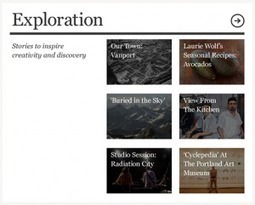How news organisations are building commercial teams of former journalists who create paid-for content on behalf of brands...
The Huffington Post, in conjunction with parent company AOL, last month published a report which proposed that native advertising is "sponsored content, which is relevant to the consumer experience, which is not interruptive, and which looks and feels similar to its editorial environment".
Perhaps the easiest way to understand it is by looking at a couple of examples, such as the Guardian's 'what to wear on a date' video, sponsored by John Lewis, with clothes featured in the video from the department store, and BuzzFeed's '20 coolest hybrid animals', created for hybrid car Toyota Prius....



 Your new post is loading...
Your new post is loading...













Several examples of native advertising and how news media are responding to the opportunities.